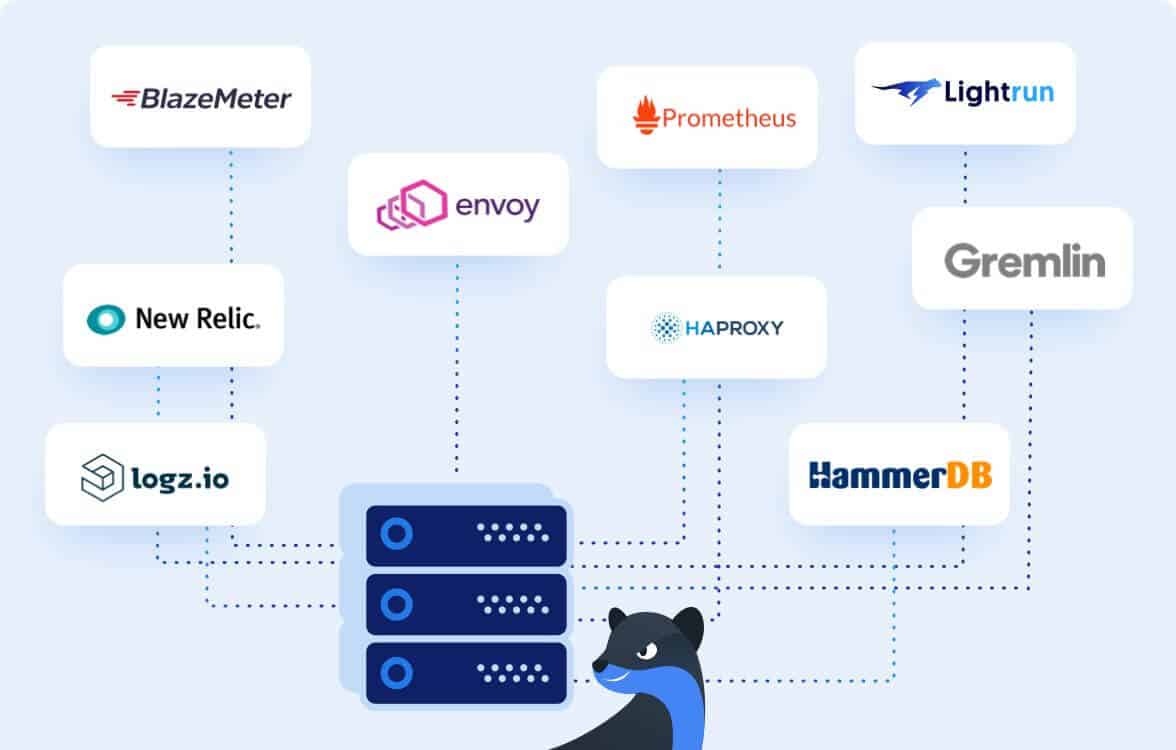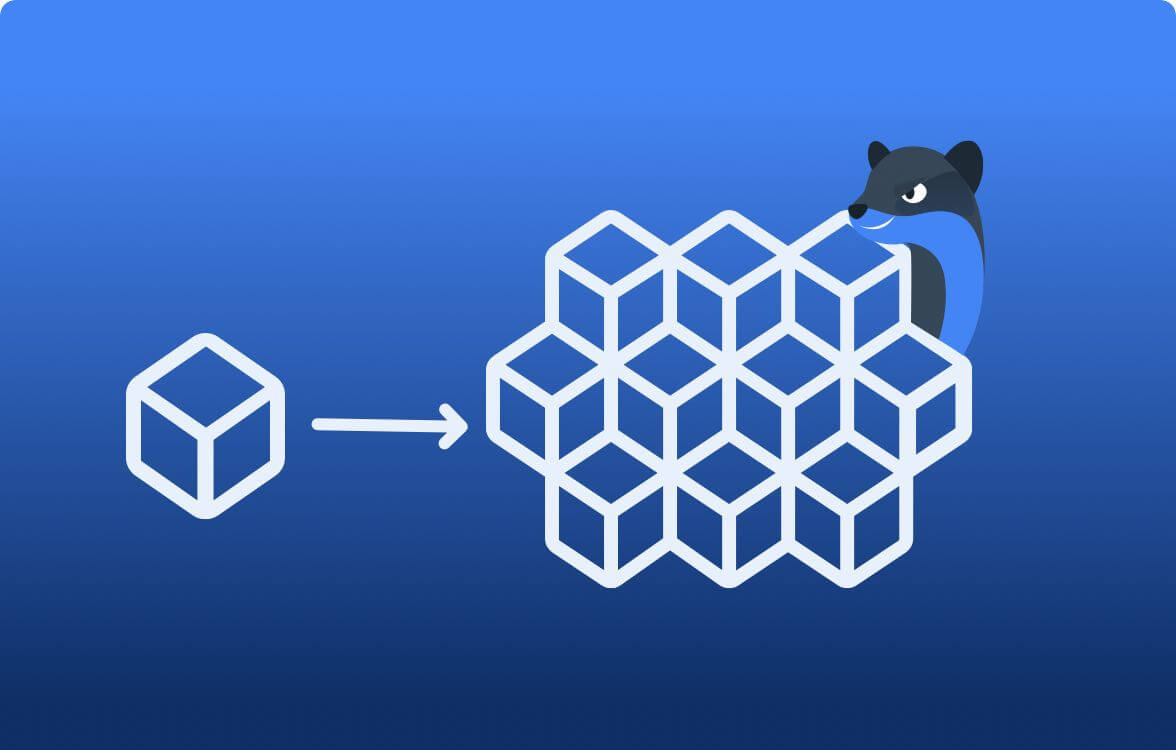

Testing in Production: Recommended Tools
Testing in production has a bad reputation. The same kind “git push – – force origin master” has. Burning houses and Chuck Norris represent testing in production in memes and that says it all. When done poorly, testing in production very much deserves the sarcasm and negativity. But that’s true for any methodology or technique.
This blog post aims to shed some light on the testing in production paradigm. I will explain why giants like Google, Facebook and Netflix see it as a legitimate and very beneficial instrument in their CI/CD pipelines. So much, in fact, that you could consider starting using it as well. I will also provide recommendations for testing in production tools, based on my team’s experience.
Testing In Production – Why?
Before we proceed, let’s make it clear: testing in production is not applicable for every software. Embedded software, on-prem high-touch installation solutions or any type of critical systems should not be tested this way. The risks (and as we’ll see further, it’s all about risk management) are too high. But do you have a SaaS solution with a backend that leverages microservices architecture or even just a monolith that can be easily scaled out? Or any other solution that the company engineers have full control over its deployment and configuration? Ding ding ding – those are the ideal candidates.
So let’s say you are building your SaaS product and have already invested a lot of time and resources to implement both unit and integration tests. You have also built your staging environment and run a bunch of pre-release tests on it. Why on earth would you bother your R&D team with tests in production? There are multiple reasons: let’s take a deep dive into each of them.
Staging environments are bad copies of production environments
Yes, they are. Your staging environment is never as big as your production environment – in terms of server instances, load balancers, DB shards, message queues and so on. It never handles the load and the network traffic production does. So, it will never have the number of open TCP/IP connections, HTTP sessions, open file descriptors and parallel writes DB queries perform. There are stress testing tools that can emulate that load. But when you scale, this stops being sufficient very quickly.
Besides the size, the staging environment is never the production one in terms of configuration and state. It is often configured to start a fresh copy of the app upon every release, security configurations are eased up, ACL and services discovery will never handle real-life production scenarios and the databases are emulated by recreating them from scratch with automation scripts (copying production data is often impossible even legally due to privacy regulations such as GDPR). Well, after all, we all try our best.
At best we can create a bad copy of our production environment. This means our testing will be unreliable and our service susceptible to errors in the real life production environment.
Chasing after maximum reliability before the release costs. A lot.
Let’s just cite Google engineers:
“It turns out that past a certain point, however, increasing reliability is worse for a service (and its users) rather than better! Extreme reliability comes at a cost: maximizing stability limits how fast new features can be developed and how quickly products can be delivered to users, and dramatically increases their cost, which in turn reduces the number of features a team can afford to offer.
Our goal is to explicitly align the risk taken by a given service with the risk the business is willing to bear. We strive to make a service reliable enough, but no more reliable than it needs to be.”
Let’s emphasize the point: “Our goal is to explicitly align the risk taken by a given service with the risk the business is willing to bear”. No unit/integration/stating env tests will ever make your release 100% error-free. In fact they shouldn’t (well, unless you are a Boeing engineer). After a certain point, investing more and more in tests and attempting to build a better staging environment will just cost you more compute/storage/traffic resources and will significantly slow you down.
Doing more of the same is not the solution. You shouldn’t spend your engineers’ valuable work hours chasing the dragon trying to diminish the risks. So what should you be doing instead?
Embracing the Risk
Again, citing the great Google SRE Book:
“…we manage service reliability largely by managing risk. We conceptualize risk as a continuum. We give equal importance to figuring out how to engineer greater reliability into Google systems and identifying the appropriate level of tolerance for the services we run. Doing so allows us to perform a cost/benefit analysis to determine, for example, where on the (nonlinear) risk continuum we should place Search, Ads, Gmail, or Photos…. That is, when we set an availability target of 99.99%,we want to exceed it, but not by much: that would waste opportunities to add features to the system, clean up technical debt, or reduce its operational costs.”
So it is not just about when and how you run your tests. It’s about how you manage risks and costs of your application failures. No company can afford its product downtime because of some failed test (which is totally OK in staging). Therefore, it is crucial to ensure that your application handles failures right. “Right”, quoting the great post by Cindy Sridharan, means:
“Opting in to the model of embracing failure entails designing our services to behave gracefully in the face of failure.”
The design of fault tolerant and resilient apps is out of the scope of this post (Netflix Hystrix is still worth a look though). So let’s assume that’s how your architecture is built. In such a case, you can fearlessly roll-out a new version that has been tested just enough internally.
And then, the way to bridge the gap so as to get as close as possible to 100% error-free, is by testing in production. This means testing how our product really behaves and fixing the problems that arise. To do that, you can use a long list of dedicated tools and also expose it to real-life production use cases.
So the next question is – how to do it right?
Testing In Production – How?
Cindy Sridharan wrote a great series of blog posts that discusses the subject in a great depth. Her recent Testing in Production, the safe way blog post depicts a table of test types you can take in pre-production and in production.
Refined by testing spectrum a bit more – this againnisnt comprehensive, but makes it increasingly clear that testing in production (especially testing post release) is just as important as pre-production testing.
Thoughts? pic.twitter.com/YS0VjACvqD
— Cindy Sridharan (@copyconstruct) February 9, 2018
One should definitely read carefully through this post. We’ll just take a brief look and review some of the techniques she offers. We will also recommend various tools from each category. I hope you find our recommendations useful.
Load Testing in Production
As simple as it sounds. Depending on the application, it makes sense to stress its ability to handle a huge amount of network traffic, I/O operations (often distributed), database queries, various forms of message queues storming and so on. Some severe bugs appear clearly only upon load testing (hi, memory overwrite). Even if not – your system is always capable of handling a limited amount of a load. So here the failure tolerance and graceful handling of connections dropping become really crucial.
Obviously, performing a load test in the production environment will stress your app configured for the real life use cases, thus it will provide way more useful insights than loading testing in staging.
There are a bunch of software tools for load testing that we recommend, many of them are open sourced. To name a few:
mzbench
mzbench supports MySQL, PostgreSQL, MongoDB, Cassandra out of the box. More protocols can be easily added. It was a very popular tool in the past, but had been abandoned by a developer 2 years ago.
HammerDB
HammerDB supports Oracle Database, SQL Server, IBM Db2, MySQL, MariaDB, PostgreSQL and Redis. Unlike mzbench, it is under active development as for May 2020.
Apache JMeter
Apache JMeter focuses more on Web Services (DB protocols supported via JDBC). This the old-fashioned (though somewhat cumbersome) Java tool I was using ten years ago for fun and profit.
BlazeMeter
BlazeMeter is a proprietary tool. It runs JMeter, Gatling, Locust, Selenium (and more) open source scripts in the cloud to enable simulation of more users from more locations.
Spirent Avalanche Hardware
If you are into heavy guns, meaning you are developing solutions like WAFs, SDNs, routers, and so on, then this testing tool is for you. Spirinet Avalanche is capable of generating up to 100 Gbps, performing vulnerability assessments, QoS and QoE tests and much more. I have to admit – it was my first load testing tool as a fresh graduate working in Checkpoint and I still remember how amazed I was to see its power.
Shadowing/Mirroring in Production
Send a portion of your production traffic to your newly deployed service and see how it’s handled in terms of performance and possible regressions. Did something go wrong? Just stop the shadowing and put your new service down – with zero impact on production. This technique is also known as “Dark Launch” and described in detail by CRE life lessons: What is a dark launch, and what does it do for me? blog post by Google.
A proper configuration of load balancers/proxies/message queues will do the trick. If you are developing a cloud native application (Kubernetes / Microservices) you can use solutions like:
HAProxy
HAProxy is an open source easy to configure proxy server.
Envoy proxy
Envoy proxy is open source and a bit more advanced than HAProxy. Wired to suit the microservice world, this proxy was built into the microservices world and offers functionalities of service discovery, shadowing, circuit breaking and dynamic configuration via API.
Istio
Istio is a full open-source service mesh solution. Under the hood it uses the Envoy proxy as a sidecar container in every pod. This sidecar is responsible for the incoming and outgoing communication. Istio control service access, security, routing and more.
Canarying in Production
Google SRE Book defines “canarying” as the following:
To conduct a canary test, a subset of servers is upgraded to a new version or configuration and then left in an incubation period. Should no unexpected variances occur, the release continues and the rest of the servers are upgraded in a progressive fashion. Should anything go awry, the modified servers can be quickly reverted to a known good state.
This technique, as well as similar (but not the same!) Blue-Green deployment and A/B testing techniques are discussed in this Cristian Posta blog post while the caveats and cons of canarying are reviewed here. As for recommended tools,
Spinnaker
Netflix open-sourced the Spinnaker CD platform leverages the aforementioned and many other deployment best practices (as in everything Netflix, built bearing microservices in mind).
ElasticBeanstalk
AWS supports Blue/Green deployment with its PaaS ElasticBeanstalk solution
Azure App Services
Azure App Services has its own staging slots capability that allows you to apply the prior techniques with a zero downtime.
LaunchDarkly
LaunchDarkly is a feature flagging solution for canary releases – enabling to perform a gradual capacity testing on new features and safe rollback if issues are found.
Chaos Engineering in Production
Firstly introduced by Netflix’s ChaosMonkey, Chaos Engineering has emerged to be a separate and very popular discipline. It is not about a “simple” load testing, it is about bringing down services nodes, reducing DB shards, misconfiguring load balancers, causing timeouts – in other words messing up your production environment as badly as possible.
Winning tools in that area are tools I like to call “Chaos as a service”:
ChaosMonkey
ChaosMonkey is an open source tool by Netflix . It randomly terminates services in your production system, making sure your application is resilient to these kinds of failures.
Gremlin
Gremlin is another great tool for chaos engineering. It allows DevOps (or a chaos engineer) to define simulations and see how the application will react in different scenarios: unavailable resources (CPU / Mem), state changes (change systime / kill some of the processes), and network failures (packet drops / DNS failures).
Here are some others
Debugging and Monitoring in Production
The last but not least toolset to be briefly reviewed is monitoring and debugging tools. Debugging and monitoring are the natural next steps after testing. Testing in production provides us with real product data, that we can then use for debugging. Therefore, we need to find the right tools that will enable us to monitor and debug the test results in production.
There are some acknowledged leaders, each one of them addressing the need for three pillars of observability, aka logs, metrics, and traces, in its own way:
DataDog
DataDog is a comprehensive monitoring tool with amazing tracing capabilities. This helps a lot in debugging with a very low overhead.
Logz.io
Logz.io is all about centralized logs management – its combination with DataDog can create a powerful toolset.
New Relic
A very strong APM tool, which offers log management, AI ops, monitoring and more.
Prometheus
Prometheus is open source monitoring solution that includes metrics scraping, querying, visualization and alerting.
Lightrun
Lightrun is a powerful production debugger. It enables adding logs, performance metrics and traces to production and staging in real-time, on demand. Lightrun enables developers to securely adding instrumentation without having to redeploy or restart. Request a demo to see how it works.
To sum up, testing in production is a technique you should pursue and experiment with if you are ready for a paradigm shift from diminishing risks in pre-production to managing risks in production.
Testing in production complements the testing you are used to doing, and adds important benefits such as speeding up the release cycles and saving resources. I covered some different types of production testing techniques and recommended some tools to use. If you want to read more, check out the resources I cited throughout the blog post. Let us know how it goes!
Learn more about Lightrun and let’s chat.
It’s Really not that Complicated.
You can actually understand what’s going on inside your live applications.



